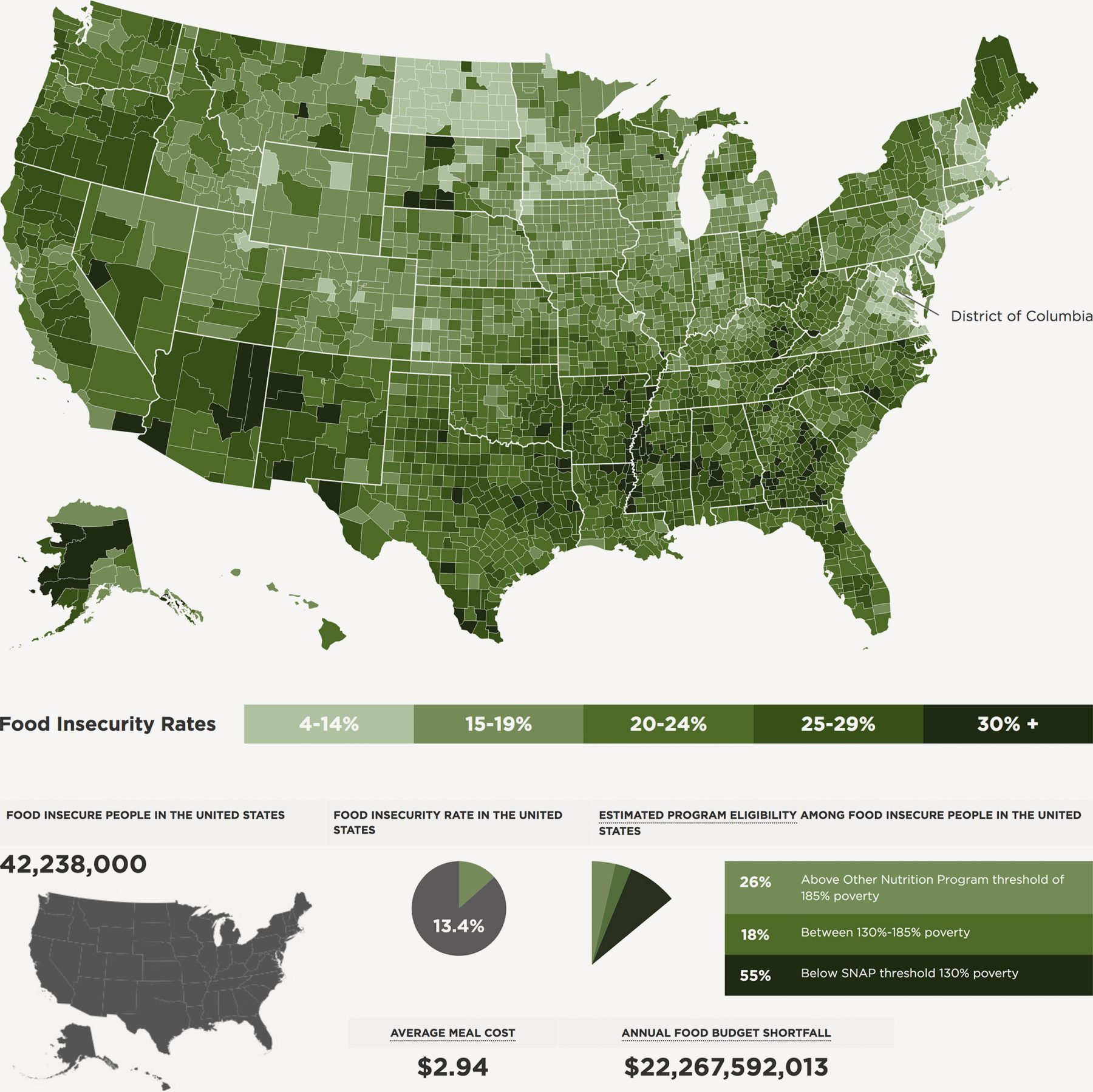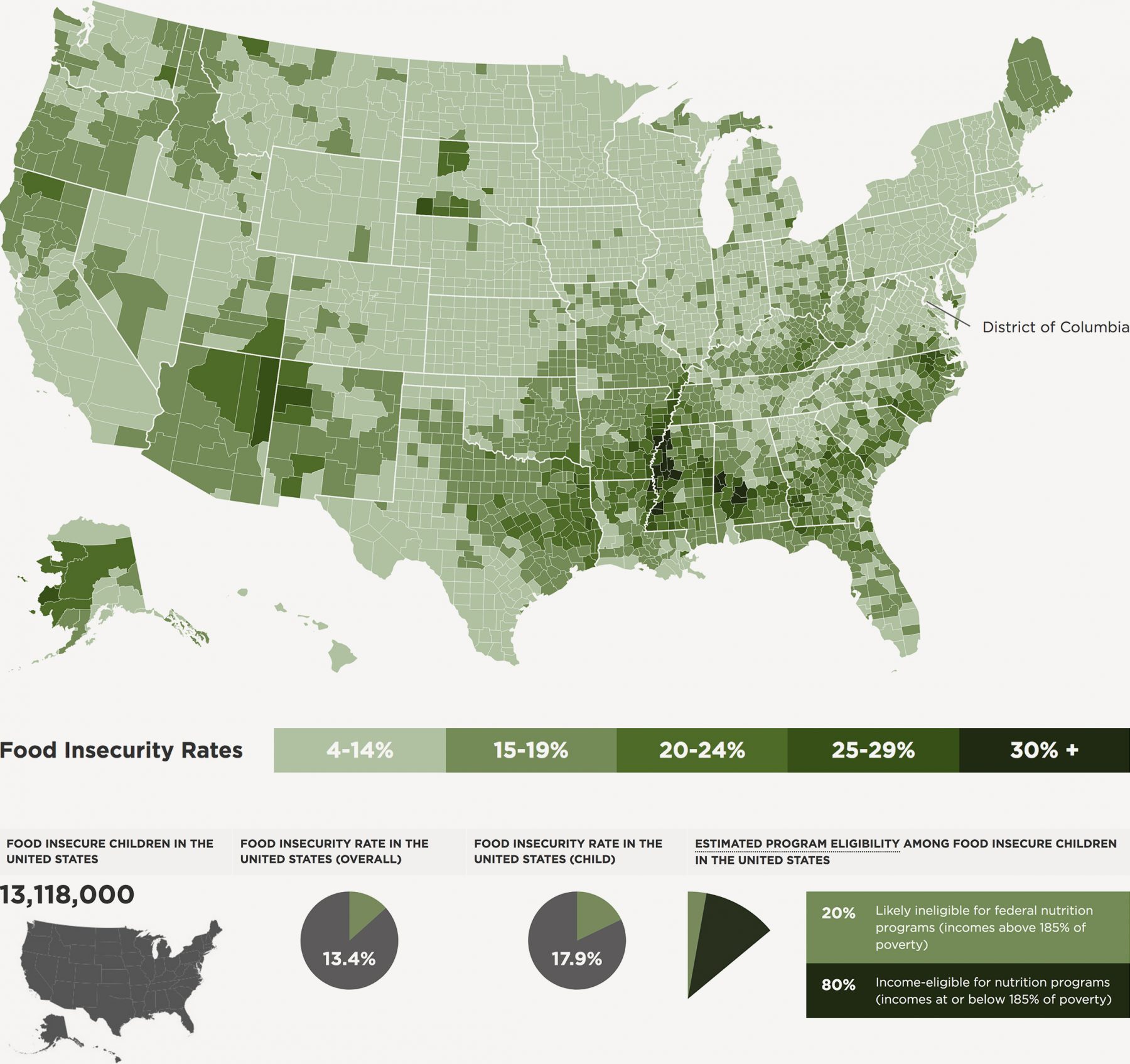
Knowledge is power, so FEED your knowledge.
Our success in the fight against hunger and food insecurity requires an understanding of what food insecurity truly looks like so we can best focus our efforts on those in need. Learn more here about the face of food insecurity, the places across the country most affected by it and how children can be significantly impacted by hunger.
What is FOOD INSECURITY?
According to the U.S. Department of Agriculture (USDA), Food Insecurity is a lack of consistent access to enough food for an active, healthy lifestyle.
HUNGER VS FOOD INSECURITY?
Food Insecurity is a household-level economic and social condition of limited ability to acquire adequate food.
Did you know? Food insecurity doesn’t just affect those who live below the poverty line. It can affect those living above the poverty line as well.
HIGH FOOD SECURITY
Households had no problems, or anxiety about, consistently accessing adequate food.
MARGINAL FOOD SECURITY
Households had problems or anxiety at times about accessing adequate food, but the quality, variety, and quantity of their food were not substantially reduced.
LOW FOOD SECURITY
Households reduced the quality, variety, and desirability of their diets, but the quantity of food intake and normal eating patterns were not substantially disrupted.
VERY LOW FOOD SECURITY
At times during the year, eating patterns of one or more household members were disrupted and food intake reduced because the household lacked money or other resources for food.
Hunger Nationwide

Who suffers most from very low food security?
Child Hunger
13 Million – or 1 in 6 – children in the U.S. live in Food Insecure homes.
22 Million kids rely on free or reduced-price school lunches
12 Million kids rely on free or reduced-price school breakfasts
4 Million kids rely on free meals in the summer, when school meals aren’t available
Food insecurity in children can make them more likely to experience:
- Learning delays
- Developmental delays
- Higher levels of aggression and anxiety
- Poorer general health
Federal Nutrition Programs work to provide food specifically for children:
- USDA Summer Food Service Program (SFSP)
- USDA Special Milk Program (SMP)
- USDA Child and Adult Care Food Program (CACFP)

Map graphics and data sourced from http://map.feedingamerica.org
“We believe that no one should go hungry and we are proud to be a part of our country’s fight to end hunger.”